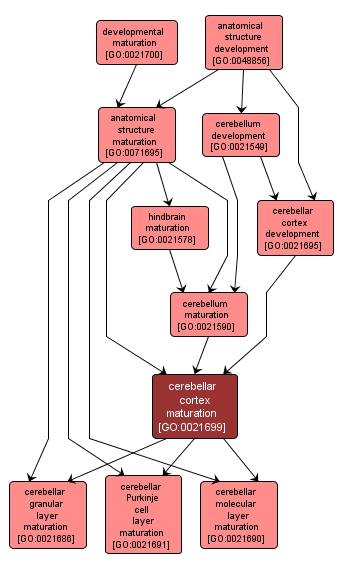| Desc: |
A developmental process, independent of morphogenetic (shape) change, that is required for the cerebellar cortex to attain its fully functional state. The cerebellar cortex is a thin mantle of gray matter that covers the surface of each cerebral hemisphere. It has a characteristic morphology with convolutions (gyri) and crevices (sulci) that have specific functions. Six layers of nerve cells and the nerve pathways that connect them comprise the cerebellar cortex. Together, these regions are responsible for the processes of conscious thought, perception, emotion and memory as well as advanced motor function. |














